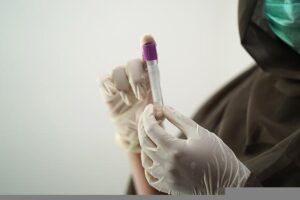Blood Clots- A Leading Cause of Preventable Hospital Deaths

Blood clots are a leading cause of preventable hospital death in the United States.
Blood clots are a leading cause of preventable hospital death in the United States. Blood clots lead to around 100,000 premature deaths every year. Shockingly, serious injuries are preventable in as many as 70% of cases. Why do so many people suffer and die due to blood clots? Unfortunately, even though the symptoms are clear and well known, medical mistakes can lead to a blood clot going undiagnosed and untreated. This often results in severe injury and death. It is critical that doctors and hospitals identify high risk patients and make the efforts to monitor and treat said patients to prevent catastrophic consequences.
Blood Clots (a/k/a VTE)- What Are They?
VTE (Venous thromboembolism) is a term referring to blood clots in veins. This broad term includes conditions called Deep Vein Thrombosis (DVT) and Pulmonary Embolism (PE), both of which are often underdiagnosed and serious (but preventable) medical conditions.
As the name suggests, DVT is when a clot forms in a deep vein, often in the lower body (e.g., lower leg or thigh). Symptoms of a DVT include swelling, pain/tenderness/cramps, and redness around the area of the clot. If caught early, treatments are generally effective. If it is not caught, the clot may break off and travel through the bloodstream to the lungs, resulting in a PE, the most serious complication associated with DVT.
Any person can develop blood clots that lead to pulmonary embolism, but certain factors can increase a patient’s risk. If members of your family have had venous blood clots or PE, you are at higher risk of developing the condition. Other common risk factors include heart disease, certain cancers, and surgery. Patients who have undergone surgery that lasted for several hours are at a higher risk of developing PE.
Injuries From Failure to Diagnose or Treat DVT
Failure to diagnose or treat a blood clot can result in serious consequences. As discussed above, a PE occurs when the blood clot reaches the lungs. Symptoms of a PE include shortness of breath, heart rate increase, and pain with deep breathing. Immediate medical treatment is required to treat a PE and dissolve the clot. Additionally, blockage of blood vessels in the heart can cause a heart attack, and blockage to blood vessels in the brain can cause an ischemic stroke, both of which can be fatal.
If you or someone close to you has been injured as a result of a medical professional’s failure to diagnose or treat a blood clot, you could be entitled to compensation. It’s important for you to reach out to a trusted medical malpractice legal team to help you with your case. Whether the medical professional failed to recognize a condition or failed to treat the condition, it’s important that healthcare professionals of all kinds are held responsible when a serious medication error occurs.
Are You Suffering From The Consequences Of Medical Errors? Contact The Law Offices of Cardaro & Peek, LLC Today
The lawyers of Cardaro & Peek, LLC have the experience and resources necessary to investigate and litigate all types of medical malpractice claims throughout Maryland and Washington D.C. Cardaro & Peek, LLC has medical personnel on staff and has access to nationally recognized, board-certified physicians and other experts, to assist in the investigation, analysis, and prosecution of all types of medical malpractice claims. If you or a loved one have experienced malpractice, give us a call at 410-752-6166. Please visit our website www.cardarolaw.com and follow us on Facebook , Twitter , and LinkedIn for more information.
The post Blood Clots- A Leading Cause of Preventable Hospital Deaths appeared first on .










